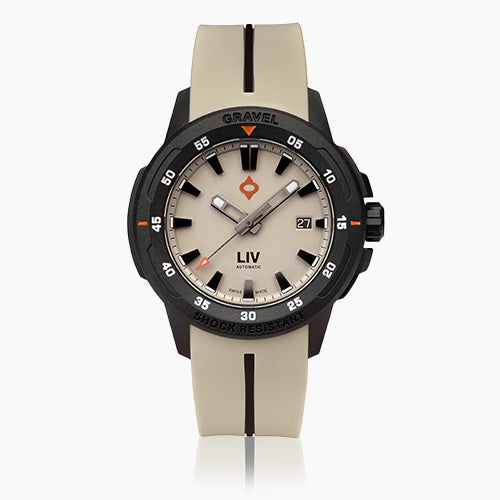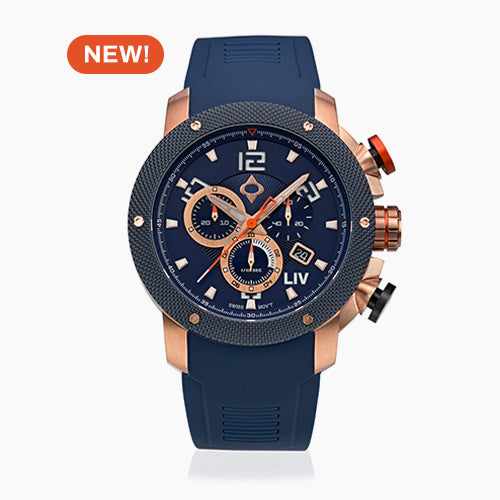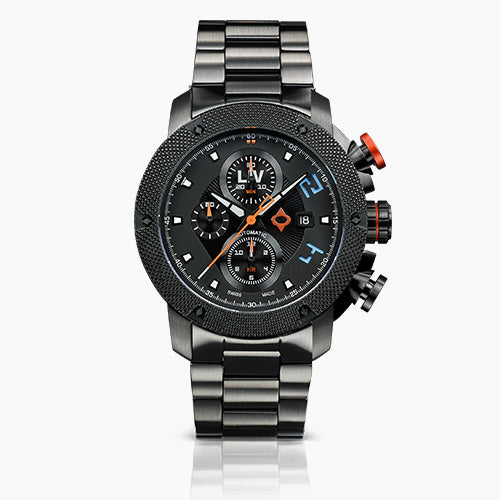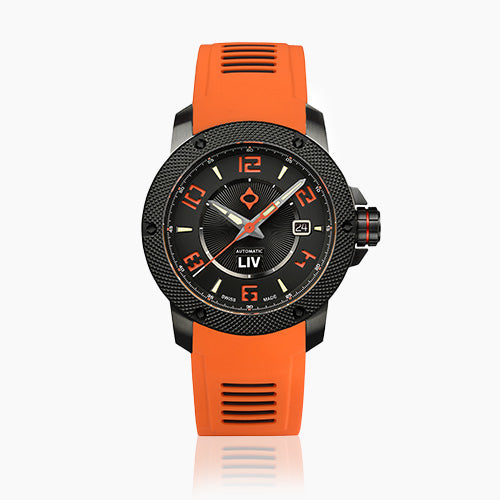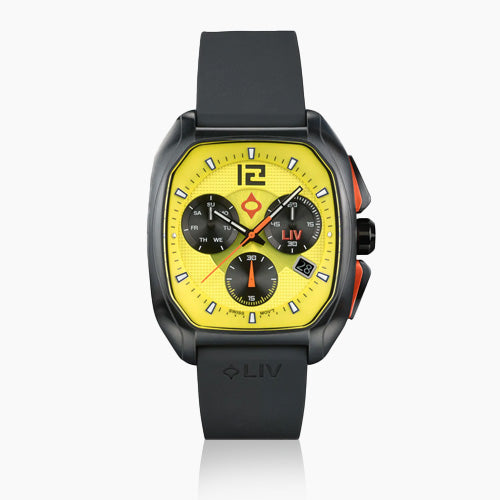
Watch Servicing 101
Share
What does a mechanical movement tune-up look like?
We recently wrote about why we at LIV Watches like to use Sellita movements for our watches. But whatever mechanical movement a watch might have, one thing is for sure: it needs to function properly. One way to ensure that is with the proper maintenance of it by means of a good service.
That is easier said than done. For example, what constitutes a thorough ‘service’ or ‘tune-up’ of your watch? How often should your mechanical watch be serviced? And what are the features and stages of a mechanical movement tune-up?
This article will delve into the fascinating world of mechanical movement maintenance by answering some of these questions. For the uninitiated, it can be quite eye-opening.
"By the way, a common perception is that servicing a watch entails a ‘complete overhaul’ of the movement. In fact, what may be needed is a more simple ‘tune-up’ - hence the title of this piece!"

- Esti Chazanow
Co-Founder at LIV Watches
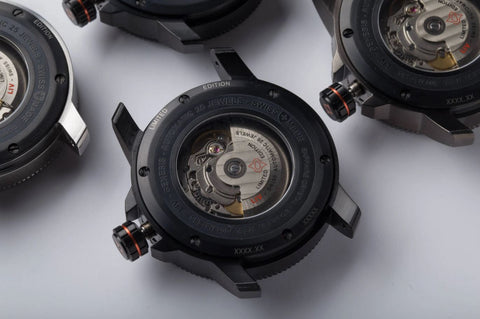
300m Ceramic Diver movements
Why servicing your watch movement matters
Servicing the movement of your mechanical watch matters for a very simple reason: it is a complicated piece of miniature engineering. Hence, its constituent parts can get worn, frayed, displaced, or damaged like any complex mechanical device.

Not only is every part of a mechanical movement intricately engineered, it’s also tiny. For example, take the tightly coiled flat balance spring known as the ‘hairspring,’ the unwinding of which helps drive the hands of a watch or any additional complications it might have, such as date or moon phase functions. It accomplishes that by oscillating at a steady rate of between 18,000 and 36,000 times per hour. That is precision at its finest.
That is why an unchecked hairspring can result in irregular or no energy to the watch. It can compromise what is effectively the heart of a mechanical movement.
A two-pronged maintenance test
A movement service is both (1) an engineering test for accuracy and (2) a material integrity test. Therefore, for example, the hairspring wouldn’t solely be checked for how tightly it is coiled/wound. It would also have its material integrity ascertained, whether its made of a metallic alloy or silicon. Compromised metal alloy means the hairspring cannot properly compensate for temperature changes, whilst compromised silicon means it may no longer be fully effective against magnetism.
Other reasons why a tune-up matters
There could be a host of reasons why you may need to have your movement serviced, beyond a planned maintenance. These can include:
- Your watch should be serviced immediately if any moisture or condensation can be seen inside the crystal or on the dial. Even the smallest amount of moisture can corrode components within a movement in just hours. Salt water is even worse!
- Ditto for excessive amounts of dust, dirt, and grit that might enter your timepiece. Time to get the movement seen to.
- Your watch running too fast or too slow is invariably a sure sign that your watch needs servicing. The official Swiss Chronometer Testing Institute’s (known as the Contrôle Officiel Suisse des Chronomètres or COSC) stipulates a daily rate tolerance or variation of between -4 seconds (i.e., time lost) and +6 seconds (i.e., time gained) a day. The COSC chronometer time variance standard is a good rule of thumb and minimum standard for a good quality mechanical watch. Modern watches should offer far more exacting standards regarding time variance, though.
- Magnetization can be very bad for a mechanical movement, including from cell phones, microwaves, speakers, X-rays, and other electronic devices that emit magnetic fields. A ‘zapped’ watch could become erratic and so require servicing.
- Botched or amateur repair work should also necessitate servicing by a professional. Unfortunately, home watch maintenance can also require this if not done properly or accurately.

Magnets can wreak havoc on a mechanical watch's delicate components.
How often you should have your watch serviced
The question of how often a mechanical watch should be serviced is one of the most contentious and divisive questions in the world of horology! The truth is, there is no hard and fast rule on this matter.
Visit any watchmaker’s website or any forum for watch lovers and collectors and it soon becomes apparent that watch aficionados fall into three main ‘camps’: (1) those who believe a mechanical watch should be serviced on a regular, planned maintenance basis (which includes most watch companies/brands and many watch experts); or (2) a mechanical watch only needs to be serviced once ‘something goes wrong;’ or (3) it really depends on the watch itself and other factors. The opinions of all three camps provide interesting insight into this contentious issue, not to mention into watch maintenance itself.
Opinion #1: Service on a regular, planned basis
The majority of watch makers do stipulate that their watches should be serviced at sustained, regular intervals. The standard time suggested for planned servicing is once every five years. The opinions on this can vary, however, from a suggested period of every four years to as seldom as every 10 years. Pundits and watch collectors do acknowledge that the service of a mechanical watch by an expert can be expensive, but consider it an investment in what is an intricately-made mechanical timepiece.
How the watch is worn is also a determining factor in how long one should wait between services. Florin Niculescu, the Vice President of product development at Parmigiani Fleurier, makes this point regarding automatic watches. He believes that it depends a lot on how often the watch is worn. The more the watch is worn, the better. This makes sense for an automatic watch, given that the more it is worn, the more likely the movement is being automatically ‘wound’ and thus functioning properly.
For Niculescu, another decisive factor too is how the watch is stored when not worn. Based on these factors, he believes that a watch should be serviced every four to five years. He concedes that an owner can wait longer if the watch has been worn regularly and properly stored.
According to experts, a specialist timepiece that greatly benefits from regular servicing is a dive watch. Water resistance testing is the prime focus of servicing these watches. This will ensure that O-ring sealing gaskets aren’t cracked or corroded due to exposure to water. A service will also check that screw-down threads aren’t compromised. As such, the maximum intervals between services of a dive watch should be five years, even as often as every two years.

"Hard-working" watches like divers can resist water, but they aren't impervious to it."
Opinion #2: Service only when needed
Then there are those that believe in the ‘beat test’: a mechanical watch only needs to be serviced when its beat rate starts changing, i.e., the watch gets faster or slower. This camp believes that an irregular beat is the best indication of a needed tune-up. As long as the watch keeps a regular beat rate, it shouldn’t require a service.
The further argument by those of this opinion is that servicing a watch can be expensive and it makes no sense to spend, say, $300 on servicing a movement, when the same movement only costs $200. This cost factor is in the same vein as those who argue that any watch that needs to be serviced every five to seven years is essentially of ‘poor quality’ anyway.
Opinion #3: It really depends...
A third, smaller camp in the ongoing debate about how often or when a mechanical watch should be serviced incorporates those who appear ambivalent about the issue. This camp doesn’t believe regular, planned maintenance is always required, nor does it believe that accuracy is always a reliable indicator of whether a watch is in need of service.
So, what could that ‘depends’ include? Here are some factors mentioned by the aforementioned watchmaker and others:
- Is the watch modern, or vintage?
- As such, how available are the parts for the watch?
- Will the service use a certified service center/manufacturer or an independent watch repair expert?
- Is water resistance a factor for the watch?
- How robust is the movement?
- Is the watch subject to an environment with high humidity or dust levels?

Lubrication matters!
Much importance is given to lubricants/oils in mechanical watches. But why so?
A mechanical movement is a wonder of springs, cogs, wheels, levers, jewels, and other marvels of engineering. All those moving parts mean that wear and tear due to attrition are a constant concern. That is why lubrication within a movement is so immensely important.
As with any mechanical device, the less friction there is between parts, the better. Also, with age, oils can dry up or become ‘gummy’.
It’s also worth noting that the more complications a movement has, the more susceptible it is to dried up lubricants. This is due to these complications having more gears and moving parts and, thus, more friction points. Experts such as Maximilian Büsser, who once worked at at Harry Winston Rare Timepieces and Jaeger-LeCoultre, and Jean-François Sberro, Managing Director at Hublot of America, caution about the need for regular oiling of movements with multiple complications.

Important aspects regarding lubrication
The most important parts of the oiling process, which requires immense deftness and precision, should include:
Lubrication can only occur once the movement is at its cleanest. Dust, dirt, and other debris mixed with lubricants can create a type of ‘grinding paste’. This will cause the oils to deteriorate sooner than they should. That is why lubrication is best done immediately after the movement comes out of the cleaning machine. Lubrication requires a steady hand worthy of a neurosurgeon. After all, the process of oiling a movement includes the oiling of parts requiring up to 50 times magnification.
Quality oils should be used. The oils most often used include:
- Moebius 9010 - a light synthetic oil commonly used for balance cap jewels, the escape wheel, and the seconds wheel;
- HP 1000 or HP 1300 - a heavy synthetic oils commonly used for the center wheel and third wheel, as well as calendar mechanisms;
- Kluber P125 - a high-viscosity oil commonly used for the mainspring barrel in mechanical watches; and
- Epilame - actually an adherent, so it is critically important in lubrication work as it ensures an oil doesn’t run or spread. It is commonly used on the escape wheel, many of the jewels, and reverser wheels.
"Want to learn more about how a movement is constructed? Check it out here."
- Esti Chazanow
Co-Founder at LIV Watches
Major parts of the watch servicing process
The principal parts of the watch servicing process include:
- Dis-assembly of the movement;
- Close examination of the movement’s parts;
- Includes inspection for wear or rust.
- Adjustments where required;
- This can be either mechanical or by hand.
- Replacement of non-functioning parts;
- Testing for water resistance;
- Cleaning;
- Reassembly of the movement;
- Lubricating;
- Fitting of the movement back into the case; and
- Accuracy testing;
- This testing for timekeeping can take a few days; and
- Final adjustments, if needed.
It’s clear that servicing a mechanical movement clearly requires meticulous care and knowledge. It can fill one with a sense of awe at the immense craftsmanship that goes into a mechanical movement.
You’ve probably fallen more in love with your mechanical watch, right?





